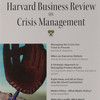 Financial key performance indicators are valuable because they capture the economic consequences of business decisions. Many of these business decisions are made as supply chain decisions, but many supply chain managers are perhaps not fully aware of how the supply chain metrics they juggle in their day to day operations impact the overall financial performance of they company they work in or work for, say, in the case of 3PL outsourcing. That is the topic of Linking Supply Chain Performance to a Firm’s Financial Performance, a recent article in the Supply Chain Management Review, where Priscilla Wisner, distinguished lecturer at the University of Tennessee, describes the “language of business” and how supply chain mangers can link their performance measure to business performance measures.
Financial key performance indicators are valuable because they capture the economic consequences of business decisions. Many of these business decisions are made as supply chain decisions, but many supply chain managers are perhaps not fully aware of how the supply chain metrics they juggle in their day to day operations impact the overall financial performance of they company they work in or work for, say, in the case of 3PL outsourcing. That is the topic of Linking Supply Chain Performance to a Firm’s Financial Performance, a recent article in the Supply Chain Management Review, where Priscilla Wisner, distinguished lecturer at the University of Tennessee, describes the “language of business” and how supply chain mangers can link their performance measure to business performance measures.
Financial statements
Acording to Wisner, there are two financial statements that are of importance when linking supply chain performance and financial performance, the income statement and the working capital.
First, the income statement linkages:
The net income figure in the income statement is arguably the most focused-upon performance metric in the business community. Supply chain decisions and performance have direct impacts on income through each of the three primary components of the income statement.
- Revenues
- Lead time
- Time to market for new products
- Response time to customer requests
- On-time delivery
- Product quality
- Product returns
- Stock outs
- Fill rates
- Product Costs
- Transportation costs
- Network distance
- Procurement costs
- Inventory costs – raw materials, work in progress, finished goods
- Storage costs
- Packaging costs
- Waste
- Stock outs
- Forecast accuracy
- Number of suppliers
- Product remediation costs
- Sales, General, and Administrative Costs
- Warranty costs
- Selling costs
- Transaction accuracy (invoices, shipping documents, export documentation)
- Exchange rate control
Second, the working capital linkages:
Within the balance sheet, a key component of organizational success (or failure) is the control of working capital. One useful supply chain performance measure to evaluate working capital performance is the cash conversion cycle, based on Inventory Days, Accounts Receivable Days, Accounts Payable Days, and linked to supply chain metrics as follows:
- Inventory Days
- Holding costs – financing, warehousing, tracking, moving, insurance
- Obsolescence
- Theft
- Forecasting accuracy
- Sourcing time
- Delivery time
- Accounts Receivable Days
- Bad debt
- Follow-up calls to receive payments
- Unable to ship due to non-payment
- Exchange rate changes
- Correct invoicing terms
- Proof of receipt
- Accounts Payable Days
- Discounts not taken
- Late payments; subsequent orders delayed
- Correct invoicing terms
- Payment penalties
Obviously, then, there are plenty of linkages to watch out for, and while the average supply chain manager may not be aware of it, what happens in the supply chain, does not necessarily stay in the supply chain.
Conclusion
Supply chain performance does affect financial performance, and even small supply chain glitches can have considerable impact on shareholder value. Sometimes supply chain incidents can make or break a company, as ex-mobile giant Ericsson experienced. While very few CEOs – or even CFOs – are likely to keep track of supply chain metrics, but supply chain managers should, and realize that what they do, does have an impact not just on the supply chain.
Link
Author link
- utk.edu: Priscilla Wisner
Related posts
- husdal.com: Hiperos and supplier risk
- husdal.com: Business Intelligence and supply chain risk
- husdal.com: Balanced scorecards for supply chains












